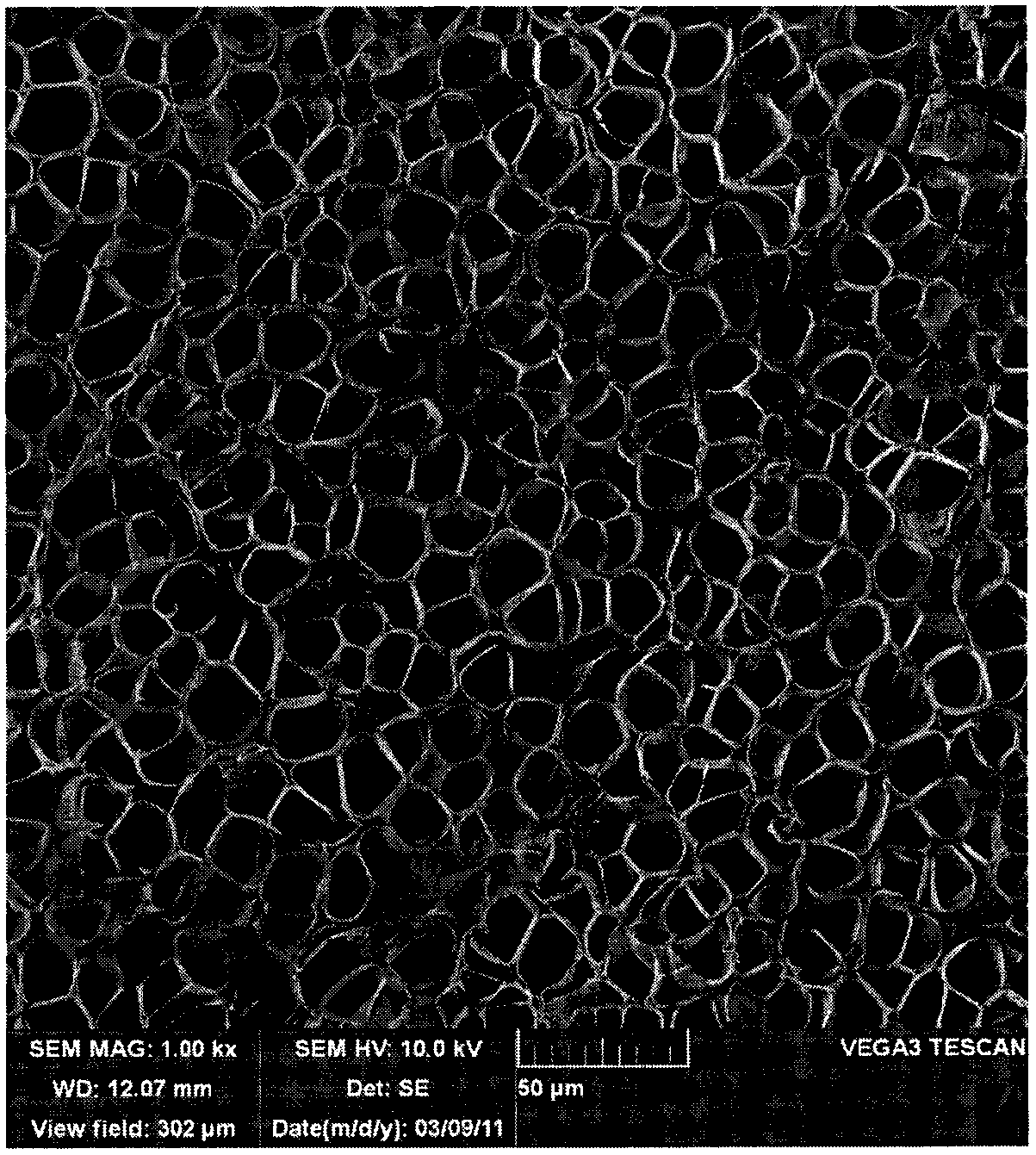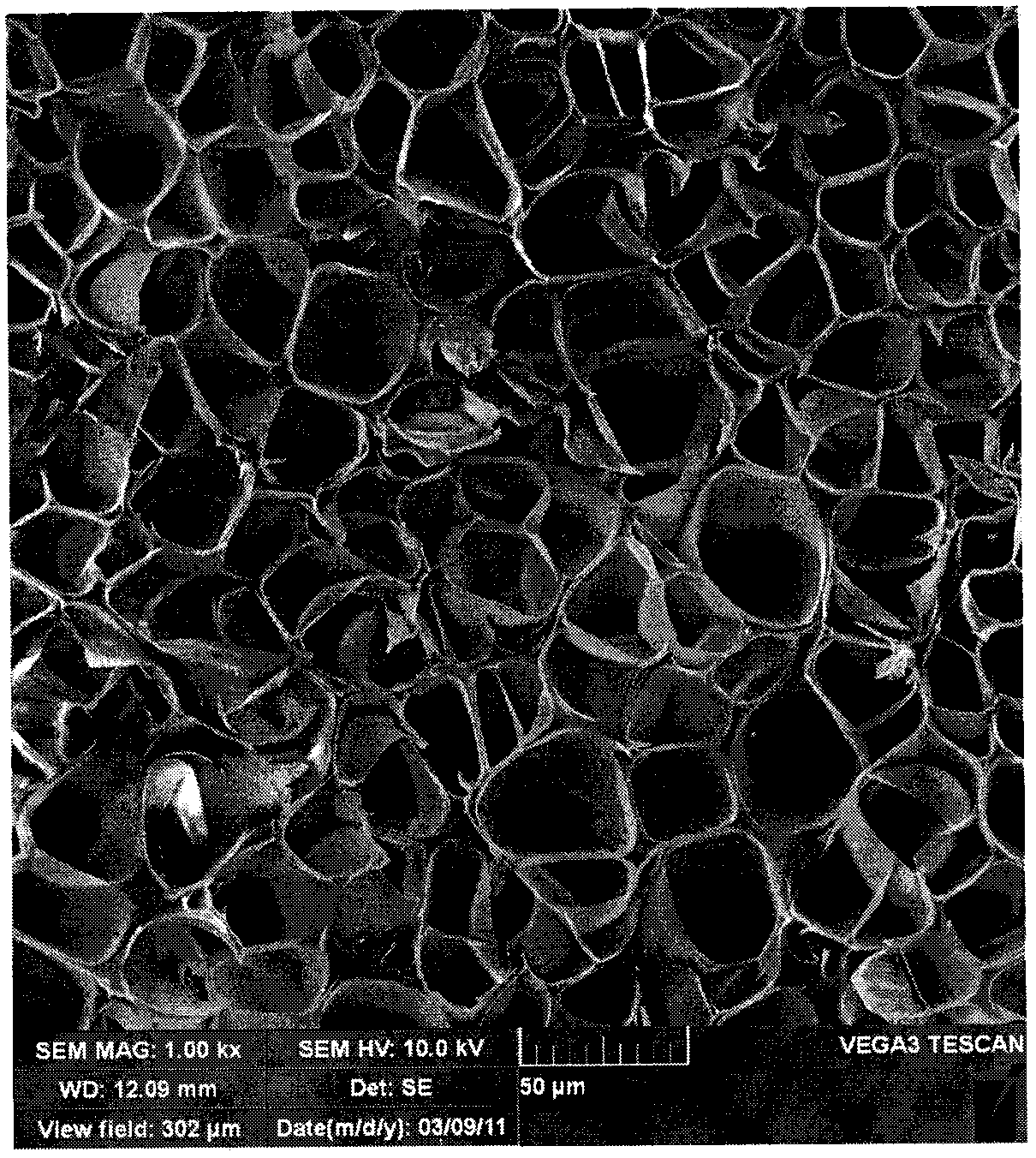Preparation method for polycarbonate microcellular foaming material
A microcellular foaming material and polycarbonate technology are applied in the field of preparing polycarbonate microcellular foaming materials by using supercritical fluid technology, and can solve the problems of increased cell diameter, cell collapse, increased stress concentration and the like, Achieve the effect of improving foaming efficiency, good pore size uniformity, and shortening saturation time
- Summary
- Abstract
- Description
- Claims
- Application Information
AI Technical Summary
Problems solved by technology
Method used
Image
Examples
preparation example Construction
[0020] The preparation method of the polycarbonate microcellular foam material of the present invention comprises step 1, step 2 and step 3;
[0021] Step 1: Place the polycarbonate material in the pressure vessel A, seal the pressure vessel A, raise the temperature to the infiltration temperature, the infiltration temperature is 100℃~140℃, fill the supercritical fluid to the infiltration pressure, the infiltration pressure is 1~15MPa , and then infiltrate under the infiltration temperature and infiltration pressure, and the infiltration time is 10 to 600 minutes;
[0022] Step 2: The temperature of the pressure vessel B is kept at the saturation temperature, and the saturation temperature is 150 ° C ~ 220 ° C, and then go through the "unloading-taking-installing-closing-filling" procedure, and the "unloading-taking-installing-closing-filling" procedure Complete within 5 minutes, then the pressure vessel B is saturated at the saturation temperature and pressure, and the satura...
Embodiment 1
[0069] Place the polycarbonate sheet (Sabic 123R, MFR 17.5g / 10min, size 50cm×100cm×2cm) in the pressure vessel A, and seal the pressure vessel A, raise the temperature to 130°C, and fill it with supercritical carbon dioxide to 12MPa, Then infiltrate for 180min;
[0070] The temperature of pressure vessel B is kept at 167°C, and then undergoes the procedure of "unloading-taking-installing-closing-filling", and the completion time of the procedure of "unloading-taking-installing-closing-filling" is 115s, and then pressure vessel B is saturated Saturated under temperature and saturation pressure, the saturation time is 30 minutes, the specific steps of the "unloading-taking-installing-closing-filling" procedure are: depressurize the pressure vessel A, and take out the soaked polycarbonate sheet from the pressure vessel A , and put it into the pressure vessel B, seal the pressure vessel B, fill it with supercritical carbon dioxide to the saturation pressure, and the saturation pre...
Embodiment 2
[0074] It was the same as Example 1 except that the polycarbonate raw material constituting the polycarbonate sheet in Example 1 was changed (NOVAREX 7022R, MFR: 14 g / 10min).
[0075] The prepared polycarbonate microcellular foamed sheet has a density of 0.178g / cm 3 , and the internal cell morphology was analyzed by scanning electron microscopy, such as figure 2 As shown, the measured average pore diameter is 22 μm, and the number of cells whose diameter is more than 2 times the average diameter is 1.4%. The cell uniformity is good, and the calculated cell density is 7.13X10 8 piece / cm 3 .
PUM
| Property | Measurement | Unit |
|---|---|---|
| pore size | aaaaa | aaaaa |
| glass transition temperature | aaaaa | aaaaa |
| density | aaaaa | aaaaa |
Abstract
Description
Claims
Application Information
 Login to View More
Login to View More - R&D
- Intellectual Property
- Life Sciences
- Materials
- Tech Scout
- Unparalleled Data Quality
- Higher Quality Content
- 60% Fewer Hallucinations
Browse by: Latest US Patents, China's latest patents, Technical Efficacy Thesaurus, Application Domain, Technology Topic, Popular Technical Reports.
© 2025 PatSnap. All rights reserved.Legal|Privacy policy|Modern Slavery Act Transparency Statement|Sitemap|About US| Contact US: help@patsnap.com



